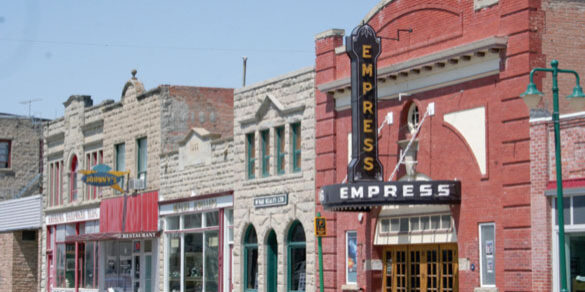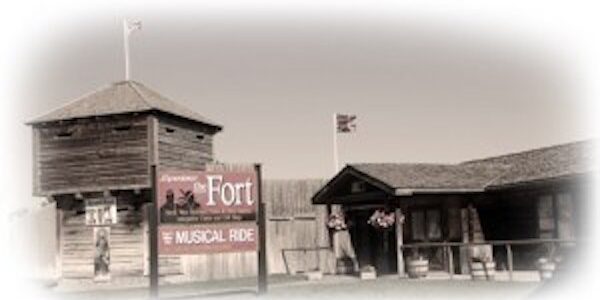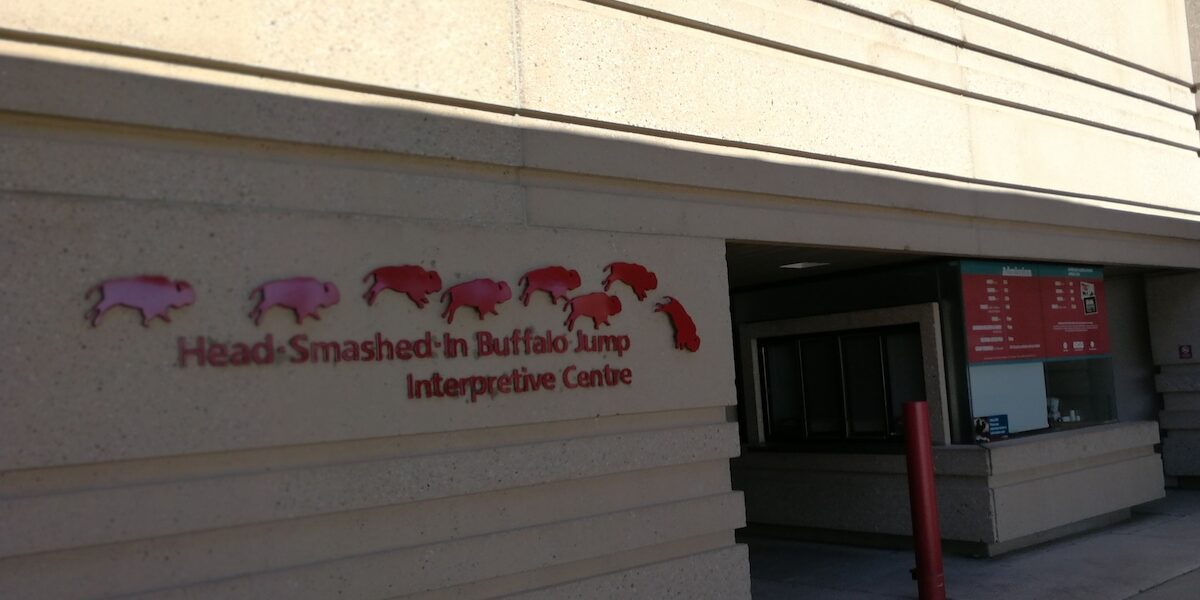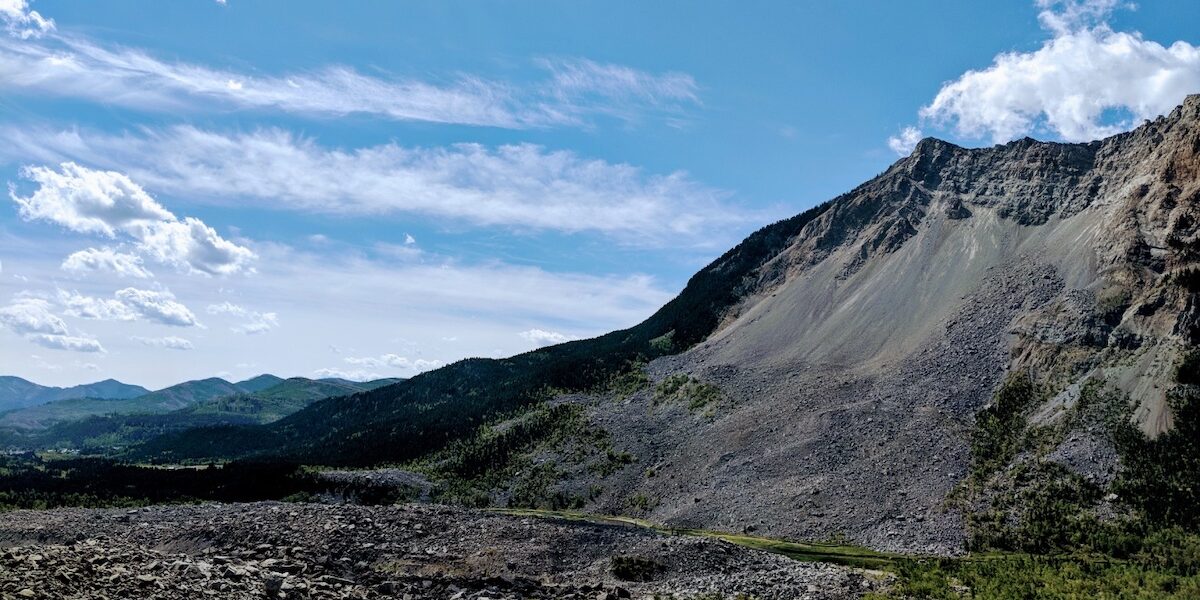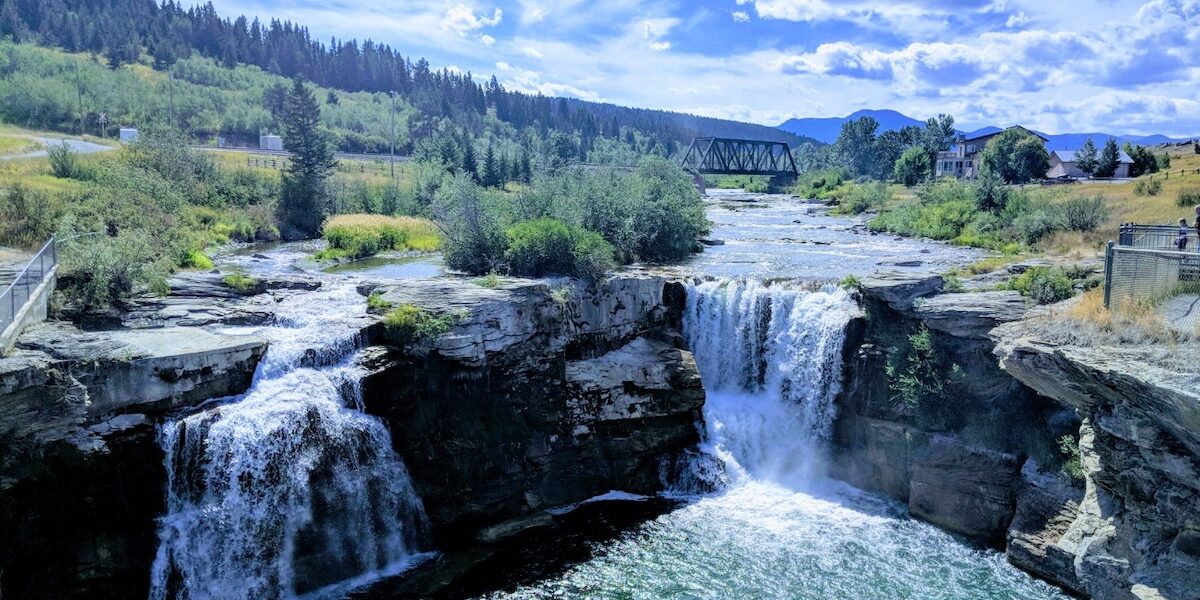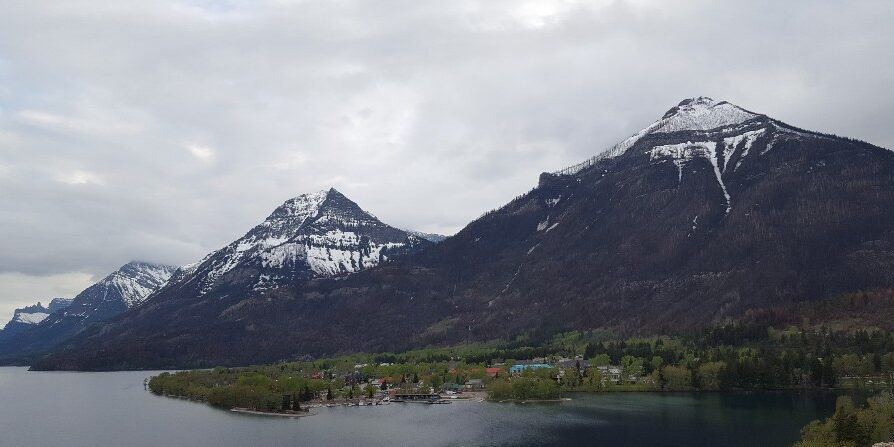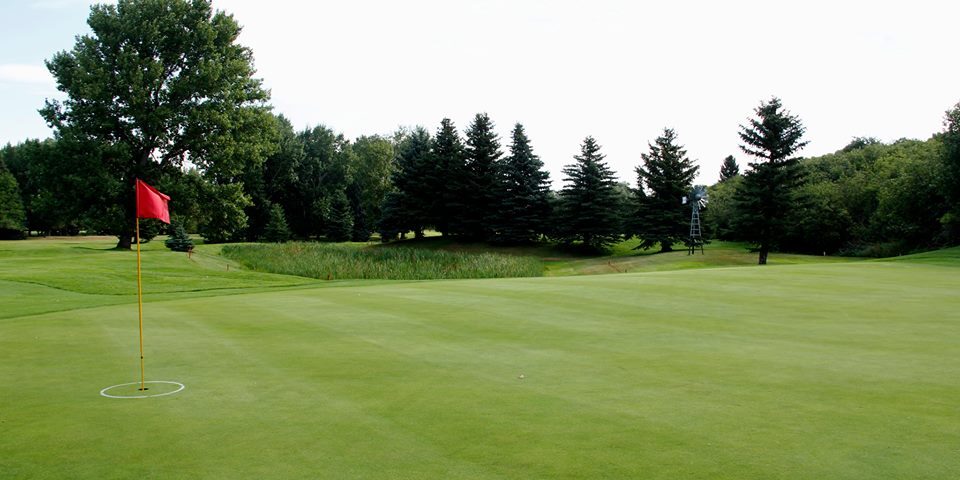Attractions
Main Street Fort Macleod
In 1982, Fort Macleod’s Main Street was designated as one of only two Designated Historical Areas in the province of Alberta. Most of the structures were originally built of wood, but after a fire razed most of the buildings, a bylaw was put in to restrict all buildings to be constructed of stone or brick. As a result, these buildings still remain today showing our proud heritage. Some buildings date back to 1878 and architecture from the 1910-1920 era is prevalent. Many films have been shot using our main street as their stage.
Fort Museum
The Fort Museum is dedicated to preserving the history of the NWMP and First Nations People from the area. The museum was built and first opened in 1957. In 1973 the Fort started it’s world famous NWMP Musical Ride, and has proudly kept the tradition to this day.
Buffalo Head smashed in Jump
Head-Smashed-In Buffalo Jump is a buffalo jump located where the foothills of the Rocky Mountains begin to rise from the prairie 18 km west of Fort Macleod, Alberta, Canada on highway 785. It is a UNESCO World Heritage Site and home of the museum of Blackfoot culture.The buffalo jump was used for 5,500 years by the indigenous peoples of the plains to kill buffalo by driving them off the 11 meter (36 foot) high cliff. It first excavated by the American Museum of Natural History in 1938. It was designated a National Historic Site in 1968, a Provincial Historic Site in 1979, and a finally a World Heritage Site in 1981 for its testimony of prehistoric life and the customs of aboriginal people.
Frank Slide 1903
The Frank Slide was a rockslide that buried part of the mining town of Frank, Northwest Territories, Canada at 4:10 am on April 29, 1903. Over 82 million tonnes (90 million tons) of limestone rock slid down Turtle Mountain within 100 seconds, obliterating the eastern edge of Frank, the Canadian Pacific Railway line and the coal mine. It was one of the largest landslides in Canadian history and remains the deadliest, as between 70 and 90 of the town's residents were killed, most of whom remain buried in the rubble. It has been designated a Provincial Historic Site of Alberta and is home to an interpretive centre that receives over 100,000 visitors annually.
Lundbreck Falls
Lundbreck Falls is a waterfall of the Crowsnest River located in southwestern Alberta, Canada near the hamlet of Lundbreck.
It is located adjacent to where Highway 3A crosses the Crowsnest River, approximately 1.2 km (0.75 mi) off of the Crowsnest Highway (Highway 3), between Pincher Creek and Crowsnest Pass. The falls have a drop of about 12 metres (39 ft). Visitors can view Lundbreck Falls from the observation platform as well as hiking to below the falls.
Walk a short trail to the falls, fish for rainbow and cutthroat trout, or take a refreshing swim in the calmer waters.
Waterton Lakes National Park
Waterton Lakes National Park is in southern Alberta, Canada, bordering Montana’s Glacier National Park. It’s known for its chain of lakes, including the large Upper and Middle Waterton lakes, flanked by the Rocky Mountains. Waterton is quiet, uncrowded National Park. The Perfect place to view spectacular scenery, wildlife and enjoy outstanding recreational opportunities. Discover nature at its best... Year Round!...
Fort Macleod golf club
Golf was first played in Fort Macleod in 1890; this was the first course to be built between Winnipeg and the West Coast.
In 1924 H.R.H. the Prince of Wales played golf on this course. The present society of our 9 hole course was formed in 1936. Because of the historical significance, approximately half of the course is a historic designated area.
Enjoy a coffee at the clubhouse while watching this historical golf course.

